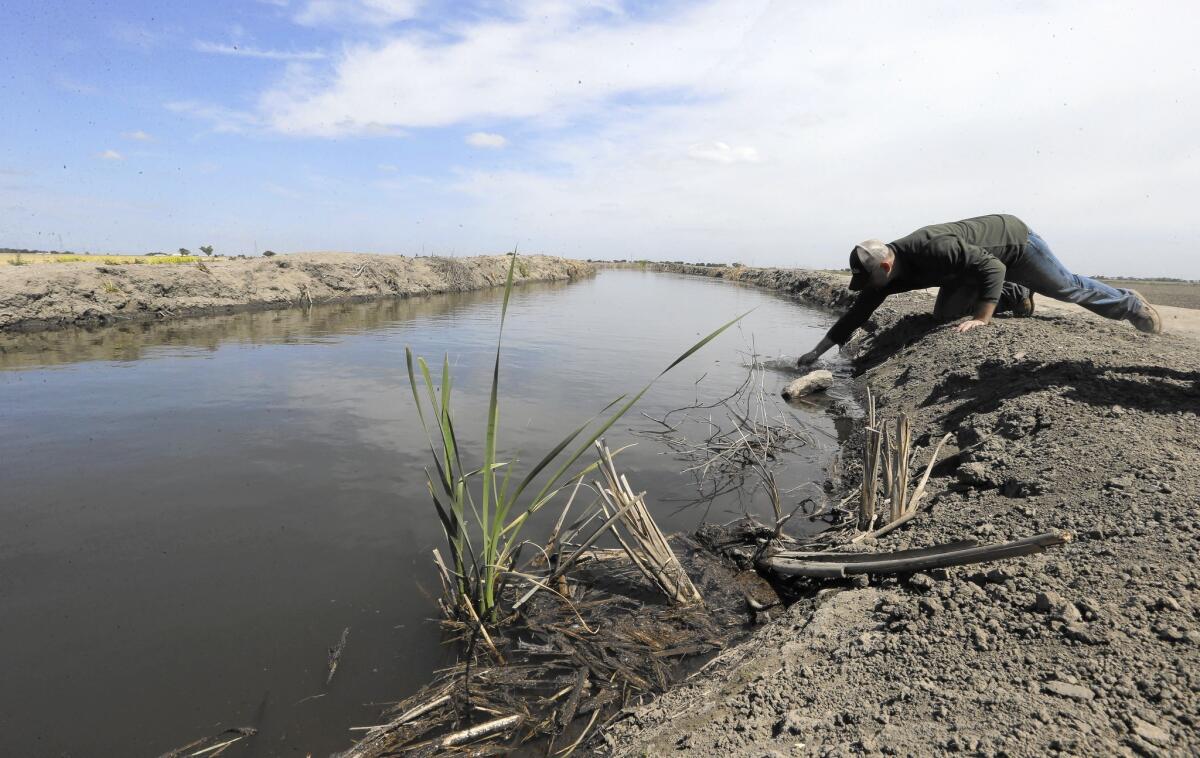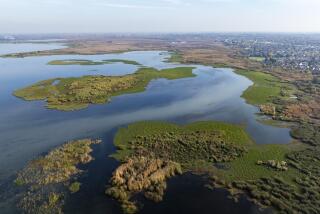Editorial: Newsom’s delta tunnel plan could work — but only as part of a more comprehensive water effort

In theory, a delta tunnel could work.
The point of Gov. Gavin Newsom’s proposed underground aqueduct is to divert water from the Sacramento River beneath the fragile wetlands, waterways and islands that make up the Sacramento-San Joaquin River Delta to an artificial body of water about 25 miles southwest of Stockton known as Clifton Court Forebay. From there, water would continue to flow through state aqueducts to coastal and Southern California and through federal channels mostly to farm fields in the San Joaquin Valley.
Currently, the water flows not under the delta but right through it. The problem is that when the powerful pumps are running near Clifton Court to drive more water to Southern California and the Central Valley, they reverse the natural flow of delta water and interfere with migrations of endangered fish. Meanwhile, instead of moving through San Francisco Bay and out to sea, runoff from all those irrigated fields further south gathers in the delta, combines with toxins from Stockton’s port and renders the water poisonous for thousands of residents already suffering shocking levels of asthma and other pollution- and poverty-related illnesses.
So when it comes to managing the amount of Sacramento River water directed to the south and west, having the ability to switch back and forth between pumps and a tunnel in response to up-to-the-minute water quality conditions and flow volumes could provide very real benefits for Southern California, Central Valley orchard crops, the delta environment and south delta residents. A delta tunnel could also take a big gulp of water when the Sacramento runs too high and send it south to refill reservoirs and groundwater basins. The tunnel could be shut off when the river is low and Chinook salmon need every drop for their migration.
In theory.
The problem with the theory is that a delta tunnel (state officials like to call it a “conveyance”) would yield all those benefits only if it were one piece of a larger complex of projects, policies and agreements to keep water flowing through the overly depleted San Joaquin River and limit the volume and timing of water diversions. And those other parts of the puzzle simply aren’t there.
Indeed, it’s not at all clear where the Newsom administration stands on the Trump administration’s moves to weaken protections for endangered species. Trump wants to divert more river water and send it to some growers (but not to others; the water gains Trump seeks for nut growers in the San Joaquin Valley would be a loss for farmers in the delta).
The Times supported the giant twin tunnel project proposed by Newsom’s predecessor because we saw the value of reducing pressure on endangered migrating fish at the delta’s south end while enhancing the reliability of water deliveries from Northern to Southern California.
But part of the appeal of that project, as first advertised, was that it would not increase water exports to Southern California, only keep them stable. By the time Newsom scrapped the project last year, however, it seemed clear that the twin tunnels could pencil out only if they took more water, sold more, and left the delta in even worse shape than it is.
Similar problems surround Newsom’s one-tunnel plan. Operated without rock-solid protections in place to ensure enough clean water flowing through struggling communities like Stockton and crippled rivers like the San Joaquin, a single tunnel could be as disastrous as two. If too much water is taken from the Sacramento River at the wrong time, it could cause new reverse flows in the north delta and drive winter-run salmon into extinction. It could exacerbate toxic algal blooms in dirty, stagnant water. And in doing that, it could destroy not just the fragile delta but California’s entire water network.
So first things first. Newsom promised to go to court to fight Trump’s move to further endanger iconic species like salmon. It’s high time to follow through. There should be stronger standards for the state permits that allow pumping in order to protect the delta ecosystem. Californians should demand stronger standards for the volume of water allowed to move unimpeded through our great rivers to keep the delta flushed of toxins and to keep residents, as well as the environment, healthy. Those standards should apply to the federal as well as the state water projects, regardless of Trump’s objections. And the Newsom administration ought to calculate the amount of water the natural system needs in order to forestall collapse before planning a project that, if misused, could increase diversions.
Then, and only then, it might be time to plan an underground aqueduct, or tunnel, or conveyance, as a necessary part of a comprehensive program to ensure California’s limited water supply is allocated wisely and equitably.
More to Read
A cure for the common opinion
Get thought-provoking perspectives with our weekly newsletter.
You may occasionally receive promotional content from the Los Angeles Times.






